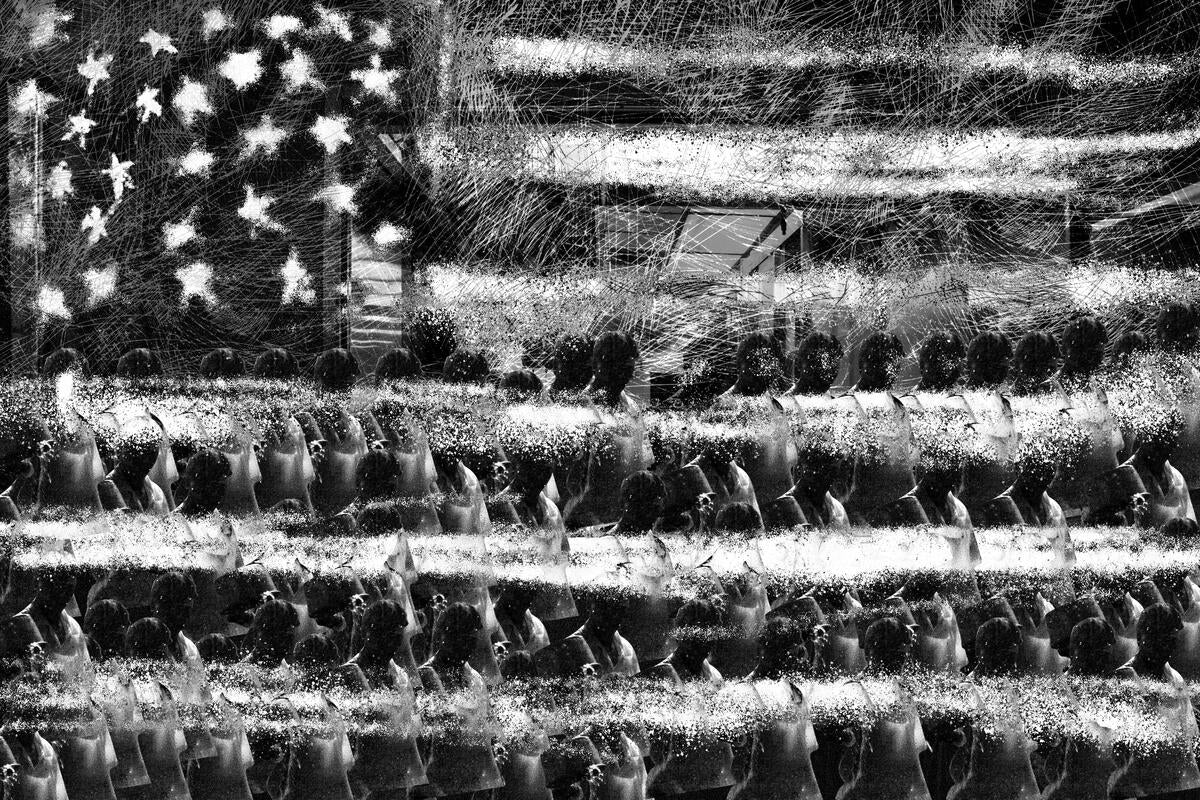Light Takes Form
Four photographers, inspired by their experiences during the Second World War and driven by the belief that photography could contribute to human betterment, came together to form a photographic cooperative that set the standard in reportage and photojournalism. In the collective's early years, however, photographers associated with the agency began to move away from the straightforward approach of their contemporaries, embracing experimentation instead. The works presented in Light Takes Form span the agency's beginnings to the present day, highlighting how abstraction has played—and continues to play—a significant and unique role in its reputation for exceptional storytelling.
Werner Bischof
Bischof’s roots were not in the photojournalistic tradition. Born in Switzerland in 1916, he studied photography with Hans Finsler, a proponent of the modernist tradition and a key figure in the “Neue Sachlichkeit” (New Realism). Bischof then went on to build his career in studio photography before documenting Europe in the aftermath of World War II. He went on to join Magnum Photos in 1949 and continued to think of himself as an artist for the rest of his life.
Erich Hartmann
Born in Munich in 1922, Erich Hartmann was 16 years old when, in 1938, he and his family fled Nazi Germany and settled in Albany, New York, as refugees. Hartmann first gained public recognition through his work for Fortune magazine in the 1950s, where his poetic approach to science, industry, and architecture became evident. Throughout his career, he pursued many long-term personal projects and photographic interpretations. He also explored abstract representations, including ink drops in water, patterns of laser light, and the intricate beauty of tiny technological components.
"I cannot really describe these photographs any further than that. They give me a sense of satisfaction because I have been able to use familiar, sometimes commonplace situations and, by the introduction of an unfamiliar way of using light, transform them into photographs which seem to me disquieting, questioning, ambiguous."
Harry Gruyaert
For his first major body of work, Harry Gruyaert photographed distorted TV images, covering events such as the 1972 Munich Olympics to create a distressed parody of the current affairs photostory. When first exhibited in 1974, the work sparked controversy for its irreverent critique of television culture and its radical challenge—both in form and content—to the conventions of press photography. Gruyaert considers this series the closest he has ever come to producing journalistic photography.
“I was reacting against the idea of decisive moments, and TV gave me a way to work with time in a different way, capturing fleeting images and strange compositions as they flashed on screen.”
Yael Martínez
Born in Guerrero in 1984, Martínez creates work that addresses the fractured communities of his native Mexico. He often employs symbolic elements to evoke the emptiness, absence, and pain experienced by those affected by the state and organized crime. Distinguishing himself from his photojournalist contemporaries, Martínez adopts an abstract approach to his images, frequently using print interventions as an extension of his nuanced storytelling.

Fiction - Vision I. The day before USA presidential Election. The stars, white, red, blue. November 2, 2020, Mexico
The original photograph of the image seen here captures a scene outside a restaurant in New York City, where a person washing dishes holds a pan, which, for Yael, symbolized the concept of protest. Inspired by this, Martinez chose to create an American flag composed of hundreds of working individuals, evoking the idea of a nation built by those often unseen. The work was completed the day before the national election, which was, in itself, a form of protest. The scratches on the image signify the passage of time and the struggles endured, while the black-and-white palette emphasizes stark societal contrasts.


















